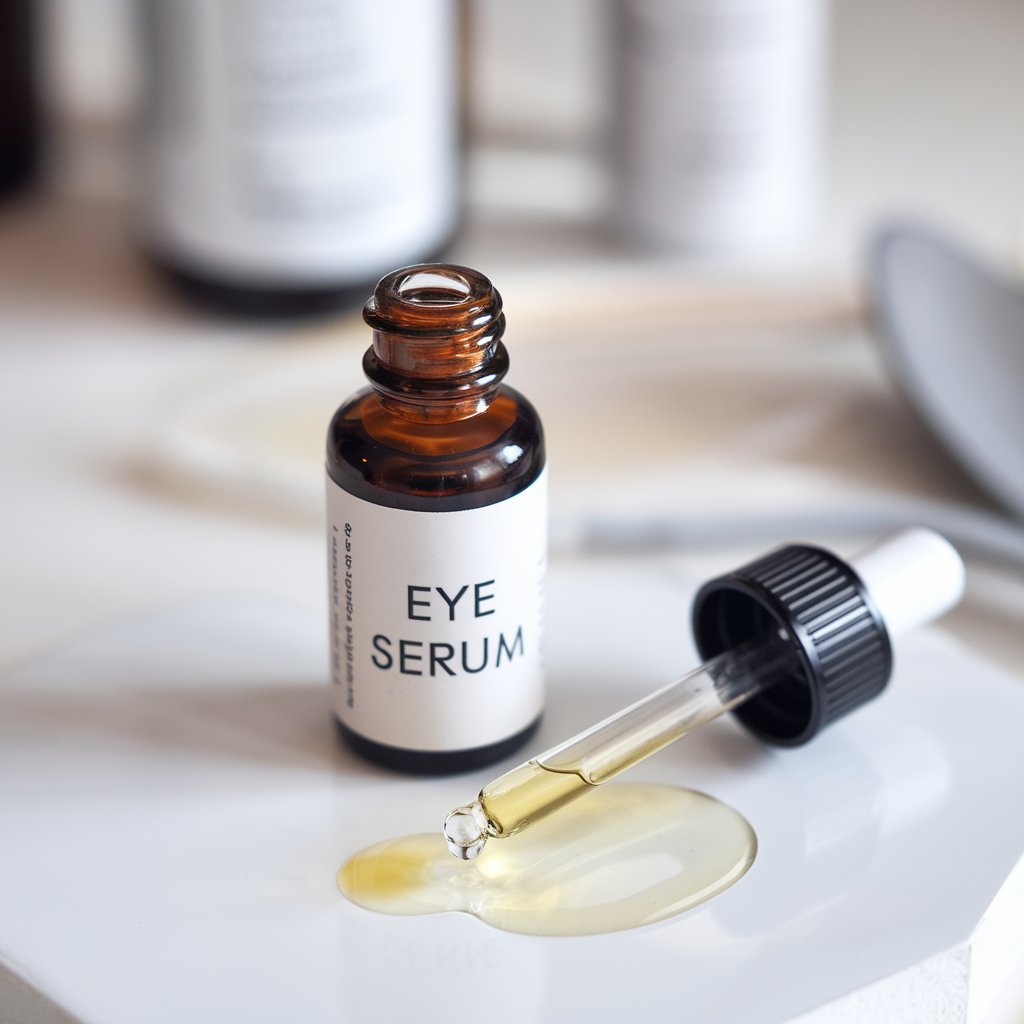The Struggles of Oily Skin
Oily skin can be both a blessing and a challenge. While it often stays more hydrated and less prone to wrinkles, it also has its downsides, like excess shine, clogged pores, and a higher likelihood of breakouts. The skin around the eyes is especially delicate, making it vulnerable to issues like dark circles and puffiness. For those with oily skin, finding an eye cream that can address these concerns without adding to the oiliness is essential.
Why Eye Cream Matters
The area around your eyes is one of the first places to show signs of aging, stress, and fatigue. Dark circles, puffiness, fine lines, and wrinkles can make you look older and more tired than you feel. For people with oily skin, it’s important to choose an eye cream that provides the necessary care without contributing to greasiness or clogging pores. A good eye cream should be lightweight, fast-absorbing, and packed with ingredients that target dark circles and puffiness while keeping your skin balanced.
What to Look for in an Effective Eye Serum
The most effective eye serums combine potent ingredients with a formulation that works well with oily skin. Here are some of the key ingredients to look for:
- Caffeine: This ingredient is known for its ability to reduce dark circles and puffiness. By constricting blood vessels, caffeine helps diminish the appearance of dark circles and reduces swelling.
- Peptides: Peptides are small chains of amino acids that help to boost collagen production, essential for maintaining the skin’s firmness and reducing puffiness and fine lines.
- Hyaluronic Acid: Hyaluronic acid is a hydration powerhouse. It attracts moisture to the skin without adding extra oil, making it perfect for the delicate eye area.
- Vitamin C: Vitamin C helps to brighten the skin and reduce the appearance of dark circles by lightening pigmentation. It also protects the skin from environmental damage.
- Niacinamide: Also known as vitamin B3, niacinamide helps regulate oil production and improves the skin’s barrier function. Its anti-inflammatory properties make it ideal for reducing puffiness and redness.
The Causes of Dark Circles and Puffiness
Dark circles and puffiness can result from various factors, including genetics, lifestyle, and environmental stressors. For those with oily skin, these issues can be worsened by excess sebum production, which can lead to clogged pores and inflammation.
Dark circles are often caused by poor circulation and thinning of the skin around the eyes, making blood vessels more visible. Puffiness is typically the result of fluid retention, allergies, or lack of sleep. Understanding these causes can help you choose the right eye cream to address them effectively.
The Benefits of a Good Eye Cream: Before and After
Using a well-formulated eye cream consistently can lead to significant improvements in the appearance of your eye area. Many people report noticeable differences in before and after comparisons, particularly in reducing dark circles and puffiness.
Before you start using an eye cream, take a close look at the condition of the skin around your eyes. Are dark circles prominent? Is there noticeable puffiness? After a few weeks of regular use, compare your results. You’ll likely see a reduction in the darkness under your eyes, decreased puffiness, and an overall improvement in the texture of your skin.
How to Apply Eye Cream for Optimal Results
Applying your eye cream correctly is crucial to achieving the best results. Here’s a step-by-step guide:
- Cleanse Your Face: Start with a clean face to remove excess oil, dirt, and makeup. This allows the eye cream to penetrate the skin more effectively.
- Use a Small Amount: A pea-sized amount of eye cream is sufficient for both eyes. Overusing the product can lead to buildup and irritation.
- Apply Gently: Use your ring finger, as it applies the least pressure, to gently tap the cream around your eyes. Start from the inner corners and move outward, being careful not to tug or pull at the delicate skin.
- Pat, Don’t Rub: Lightly pat the cream into your skin until fully absorbed. Rubbing can irritate and stretch the skin.
- Follow with a Lightweight Moisturizer: After applying your eye cream, use a moisturizer suitable for oily skin to lock in hydration and keep your skin balanced.
- Consistency is Key: For the best results, apply your eye cream twice daily—once in the morning and once at night.
Choosing the Best Eye Cream for Oily Skin
When selecting an eye cream for oily skin, it’s essential to consider your specific skin type and concerns. Look for a product that is labeled as non-comedogenic, meaning it won’t clog your pores. The best eye creams are lightweight, fast-absorbing, and contain ingredients that hydrate and protect without adding extra oil.
If your primary concern is dark circles, focus on eye creams with brightening ingredients like vitamin C. For puffiness, look for products with anti-inflammatory ingredients like caffeine or peptides. Tailoring your choice to your specific needs will help you achieve the best results.
Conclusion: Brighten and Refresh Your Eyes with the Right Eye Cream
A good eye cream is a vital component of any skincare routine, especially for those with oily skin. By choosing a product that targets dark circles and puffiness without clogging pores or adding to the oiliness, you can achieve a brighter, more youthful appearance.
Remember, consistency is key. Use your eye cream regularly and give it time to work. With the right product and a little patience, you’ll notice a significant improvement in the appearance of your eye area, leaving you with clearer, fresher-looking eyes.

